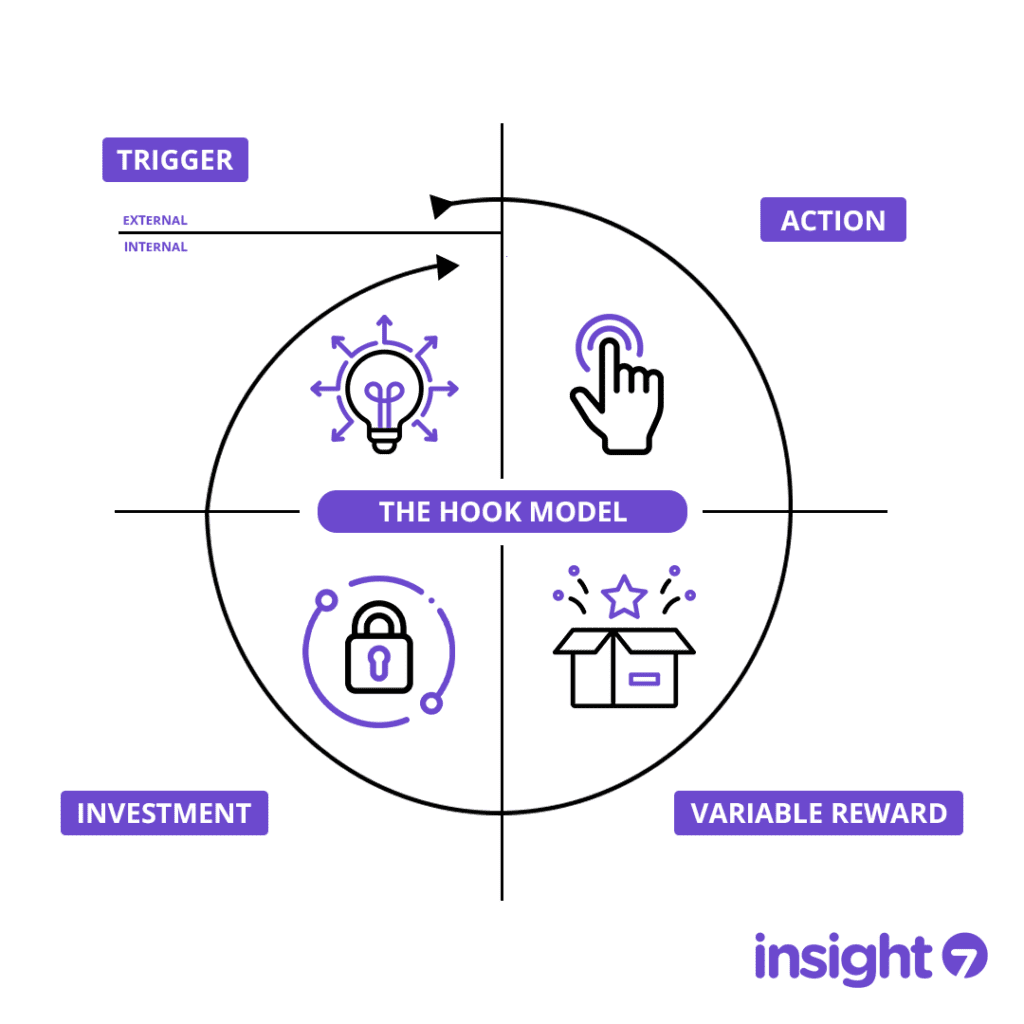How to Implement AI for Customer Feedback Analysis: Challenges and Best Practices
-
Bella Williams
- 10 min read


Customer feedback is a valuable asset for any business. It helps companies understand what customers think about their products or services and identify areas for improvement.
However, analyzing large volumes of feedback manually can be time-consuming and prone to errors. This is where AI comes into play.
By using AI-powered tools, businesses can streamline the feedback analysis process and generate valuable insights that can drive decision-making.
From understanding customer sentiment to detecting patterns in feedback, AI can make analysis faster, more efficient, and more accurate. The challenge lies in implementing AI effectively to ensure that the insights gathered are both actionable and relevant.
In this article, we’ll guide you through the process of implementing AI for customer feedback analysis, covering both the challenges and best practices.
We’ll explore the role of AI in feedback analysis, key steps for successful implementation, and common pitfalls to avoid. Whether you’re looking to enhance customer satisfaction, fine-tune your marketing strategy, or improve your product, this guide will show you how to make AI work for your business.
Understanding the Basics
AI helps in feedback analysis by automating the process of sorting, categorizing, and extracting meaningful insights from large datasets. It identifies patterns in customer sentiments, highlights common issues, and enables businesses to take timely action based on real-time feedback.
Before diving into implementation, it’s important to grasp the fundamentals of AI in customer feedback analysis. At its core, AI uses machine learning and natural language processing (NLP) to analyze large sets of data and extract insights.
This can include everything from categorizing feedback by sentiment (positive, negative, neutral) to identifying emerging themes or patterns in customer comments.
One of the most powerful features AI offers is sentiment analysis, which automatically detects the emotional tone behind feedback. Sentiment analysis can help businesses quickly identify areas that are making customers happy or frustrated.
Similarly, natural language processing (NLP) enables AI to understand human language, making it easier to extract meaningful insights from unstructured data such as reviews or surveys.
The challenges of manual feedback analysis are well-known. Sorting through thousands of comments, categorizing them, and identifying trends can be overwhelming.
Traditional methods also leave room for human error or bias, which can distort the insights gathered. AI helps overcome these challenges by automating the analysis process, ensuring a faster, more consistent, and objective approach to understanding customer feedback.
However, AI is not without its own challenges. For example, AI systems rely heavily on the quality of data they are fed. Poorly organized or incomplete feedback data can lead to inaccurate results.
Additionally, while AI can provide quick insights, human judgment is still necessary to interpret and apply those insights correctly. This means businesses need to strike a balance between leveraging AI and using human intuition.

Step-by-Step Guide
Step 1: Choosing the Right AI Tools
When selecting AI tools for customer feedback analysis, it’s important to prioritize features that align with your business goals.
Look for tools that offer text analysis to process open-ended feedback, sentiment detection to understand customer emotions, and automated reporting to quickly generate insights that can be shared across teams.
AI tools can be particularly effective, as they specialize in qualitative data analysis, making it easy to extract actionable insights from interviews, surveys, and reviews.
Insight7’s automated qualitative data analysis allows businesses to upload large datasets and get detailed insights with minimal manual input. This feature is ideal for companies looking to analyze feedback in bulk and derive clear, actionable takeaways.
It also offers bulk transcription capabilities, enabling businesses to convert audio or video feedback into text for easier analysis. This feature is essential for companies dealing with interview or call feedback, allowing them to transcribe and analyze multiple sources of feedback quickly.
Once you’ve chosen the right tool, you can begin gathering feedback data.
Step 2: Collecting and Organizing Feedback Data
The accuracy of your AI analysis will depend largely on the quality of the feedback you provide. To ensure comprehensive results, it’s essential to gather feedback from multiple sources, including surveys, product reviews, social media, and customer service interactions. Consolidating feedback from different touchpoints will give your AI a richer dataset to work with, leading to more accurate insights.
When organizing feedback data, it’s important to group similar types of feedback together, such as product complaints, service reviews, or feature suggestions. This helps the AI system categorize the feedback correctly and generate more relevant insights.
Insight7 allows users to consolidate customer feedback from various sources into one centralized repository. This project-based feature makes it easy to manage and organize data, so you can track feedback trends across different products or time periods.
Step 3: Training and Customizing the AI System
AI systems are powerful, but they become even more effective when tailored to your specific business needs. Depending on the industry you’re in, the language and type of feedback may vary greatly. For example, a healthcare company analyzing patient feedback will need an AI system trained to understand medical terms, while an e-commerce business will need AI to focus on product-specific feedback.
Customizing AI systems allows you to focus on the insights that matter most to your business. By fine-tuning the system to understand the unique terminology or customer concerns in your industry, you can ensure that the insights generated are both relevant and actionable.
AI platforms offer customizable insight deliverables, allowing you to tweak how data is processed and what insights are prioritized. This ensures that your AI system is delivering insights that are aligned with your specific business goals and customer needs.
Step 3: Training and Customizing the AI System
AI systems are most effective when trained and customized for specific applications. Although many tools are plug-and-play, customizing them to meet your industry-specific requirements will improve the quality of insights. Training the AI model involves adjusting the algorithms to recognize specific keywords, phrases, or patterns that are relevant to your business.
For example, if you’re in retail, you may want to focus on customer feedback regarding product quality, shipping experiences, or customer service. The system can be customized to identify these categories and give more nuanced insights. AI tools, like Insight7, makes it easy to fine-tune its analysis model by allowing users to create customizable insight deliverables, which focus on the most relevant aspects of customer feedback for your business. This ensures that the feedback data you gather is actionable and leads to meaningful changes.
Step 4: Running the AI Analysis
After organizing the data and customizing the AI system, the next step is to run the analysis. At this stage, the AI tool processes the feedback data to extract key insights like sentiment trends, common themes, and emerging patterns. AI tools streamline this process by offering comprehensive reporting, which summarizes all findings in easily digestible formats.
When running an analysis, focus on examining the results for high-frequency keywords and overall sentiment. AI-powered tools can quickly identify shifts in customer sentiment, making it easier for businesses to respond promptly to issues or capitalize on positive feedback trends.
Additionally, AI tools can categorize feedback based on themes, providing a clearer picture of what matters most to your customers. This level of insight allows businesses to address key areas and make informed decisions that directly impact customer satisfaction.
AI can analyze reviews by using natural language processing (NLP) to detect sentiments, identify themes, and pinpoint recurring customer concerns. By running feedback data through AI systems like Insight7, businesses can quickly spot trends and make necessary improvements.
AI can also summarize customer feedback by using algorithms that detect recurring themes, keywords, and sentiment within feedback data. This summary allows businesses to quickly grasp the general tone and main issues present in large datasets.
Step 5: Interpreting and Applying Insights
Interpreting AI-generated insights requires a mix of data literacy and strategic thinking. While AI can process vast amounts of data, human judgment is still necessary to apply these insights effectively. Once the AI tool has run its analysis, review the results to understand broader trends, pain points, and opportunities for improvement.
For example, if sentiment analysis reveals a high level of dissatisfaction with a product feature, businesses can take immediate steps to rectify the issue. Insight7’s project-based research repository allows you to store and revisit past insights, enabling continuous improvement.
Applying these insights not only helps in improving products or services but also in refining marketing strategies and enhancing customer experiences. By leveraging both AI and human interpretation, businesses can make data-driven decisions that align with customer needs.
Best AI Tools for Analyzing Customer Feedback in 2024
To help businesses analyze customer feedback efficiently, here are some of the best AI-powered tools for 2024. These platforms vary in features, so businesses should choose one based on their specific needs.
1. Insight7
Insight7 stands out as an AI-driven qualitative data analysis tool specifically designed for interviews, surveys, and customer feedback. It processes both text and audio data, offering transcriptions, theme extraction, and sentiment analysis. This all-in-one platform allows businesses to collect insights from various channels, making it highly versatile.
- Key Features: Automated transcription, sentiment analysis, theme detection, and customizable insights.
- Pros: Easy to use, supports analysis of diverse feedback sources, customizable models.
- Cons: Focuses more on qualitative data, so may not be ideal for high-volume quantitative feedback.
Insight7 is perfect for businesses looking to analyze interviews, customer service calls, or survey responses in-depth, with the added ability to automatically extract actionable insights from this qualitative data.
Extract insights from interviews, calls, surveys
and reviews for insights in minutes
2. Qualtrics XM
Qualtrics Experience Management (XM) is a customer experience platform that integrates AI for analyzing customer feedback. The platform uses text iQ, a natural language processing (NLP) feature, to analyze open-ended responses and extract actionable insights. It is designed for large-scale customer feedback analysis, making it ideal for enterprise-level businesses.
- Key Features: Text iQ for NLP, customizable feedback workflows, data analysis across customer touchpoints.
- Pros: Scalable, designed for large organizations, integrates well with existing business tools.
- Cons: Expensive, complex to set up for smaller teams.
Qualtrics XM is best suited for large enterprises looking for a robust system that can analyze feedback across multiple customer interaction points, providing deep insights into customer experiences.
3. Medallia
Medallia is another leading AI tool for customer experience and feedback analysis. It uses machine learning to evaluate customer interactions across channels, helping companies quickly detect and act on emerging trends. The tool’s strength lies in its real-time insights and ability to handle large volumes of data from various customer touchpoints.
- Key Features: Real-time sentiment and trend detection, integration with business tools, text analytics.
- Pros: Strong data visualization capabilities, real-time feedback analysis, works across multiple platforms.
- Cons: Expensive, requires time to implement fully.
Medallia is a great option for businesses that need real-time insights from large datasets, especially those managing customer feedback from multiple digital and in-person touchpoints.
4. Sprinklr
Sprinklr offers AI-powered customer experience management that helps analyze feedback from social media and other digital platforms. It is especially useful for businesses focused on social media sentiment analysis. With its robust social media monitoring features, Sprinklr can detect customer sentiment, identify trends, and help businesses act quickly on emerging issues.
- Key Features: Social media monitoring, sentiment analysis, competitive benchmarking, real-time alerts.
- Pros: Excellent for digital-first businesses, strong social listening features, real-time alerts.
- Cons: Focused primarily on social media; not ideal for analyzing other types of feedback.
Sprinklr is best suited for businesses that have a strong digital presence and rely heavily on social media interactions to gauge customer sentiment.
5. Thematic
Thematic is a specialized feedback analysis tool that uses AI to group customer feedback into themes and topics. It focuses on discovering trends and underlying issues by categorizing feedback into intuitive, visual clusters. The tool offers advanced analytics features for businesses that want to dig deep into specific customer issues.
- Key Features: Theme detection, sentiment analysis, text categorization.
- Pros: Easy to visualize and interpret data, good for discovering root causes of issues.
- Cons: Less versatile for non-text-based feedback, limited customization options.
Thematic is a strong choice for businesses looking to understand recurring themes in customer feedback, particularly when dealing with large amounts of text-based data.
Common Pitfalls to Avoid
When implementing AI for customer feedback analysis, certain pitfalls can hinder success. First, it’s easy to become overly reliant on AI without factoring in human judgment. AI can process large datasets efficiently, but its results need human validation. For instance, AI might misinterpret sarcasm or nuanced feedback, especially in customer reviews. Therefore, businesses should always review AI-generated insights and consider external context before acting on them.
Another common issue is inaccurate data inputs. If the feedback data collected is biased or incomplete, the AI analysis will be skewed. For example, relying only on one type of feedback source, like social media reviews, may not give a complete picture of customer sentiment. Ensure your dataset includes feedback from diverse channels to improve the quality of the AI analysis.
Finally, businesses often make the mistake of underestimating the setup and customization required for AI systems. Customizing the AI to fit specific business needs ensures that insights are relevant and actionable. Failing to do so can result in generic, less meaningful insights that don’t lead to real improvements. Avoid these pitfalls by ensuring the feedback data is diverse, the AI system is customized, and human oversight is maintained.
Conclusion: Unlocking the Full Potential of AI for Customer Feedback Analysis
AI is transforming the way businesses understand and act on customer feedback, offering speed, precision, and insights that were previously unattainable.
However, to fully unlock the potential of AI in customer feedback analysis, it’s essential to ensure that the feedback data is diverse, well-organized, and regularly updated. Customizing your AI tool to align with your business needs and regularly validating its insights with human oversight are also key steps in maintaining the accuracy and relevance of your findings.
Whether you’re a startup looking to improve a product or a large corporation aiming to enhance customer loyalty, AI offers a scalable solution to gather and interpret customer feedback more effectively than ever before.
By following the steps outlined in this guide—choosing the right tools, organizing your data, training your AI system, running the analysis, and interpreting the results—you can leverage AI to turn customer feedback into meaningful, actionable insights.
If you’re looking for the best AI tools to get started with customer feedback analysis, Insight7 is an excellent choice. With its advanced capabilities in automating transcription, analyzing qualitative data, and generating reports, Insight7 makes customer feedback analysis faster and more efficient, helping businesses stay responsive to their customers’ evolving needs.
Analyze & Evaluate Calls. At Scale.








